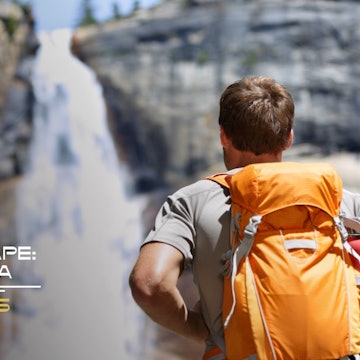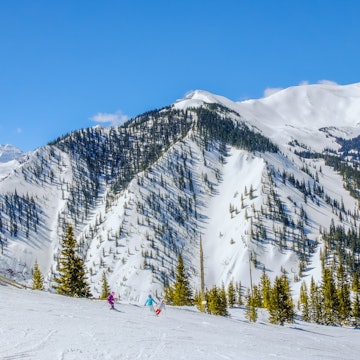
How to see the best of the Southwest: 4 incredible USA itineraries

Aug 22, 2025 • 14 min read

The scenic highways of the Southwestern USA were made for road trips. Nick Fox/Shutterstock
When it comes to inspiration and adventure, the Southwestern USA always delivers. The huge states of Nevada, Arizona, Utah and New Mexico serve up cactus-studded landscapes, red-rock canyons, timeless pueblo communities, Wild West legends, tumbleweed ghost towns and outdoor thrills in abundance. Adventures include everything from Grand Canyon treks and desert drives to whitewater rafting.
But there’s a lot of ground to cover in this corner of the USA. New Mexico alone spans 121,590 sq miles (314,917 sq km), and its Southwest neighbors aren’t much smaller – meaning traveling across this sweep of the country requires some planning. On the flip side, with its gorgeous landscapes, widely spaced towns and cities, and epic highways such as Hwy 163 and Route 66, the Southwest is perfectly set up for road tripping.
To help get you on the open road, here are four classic Southwest itineraries to plot on your road map.
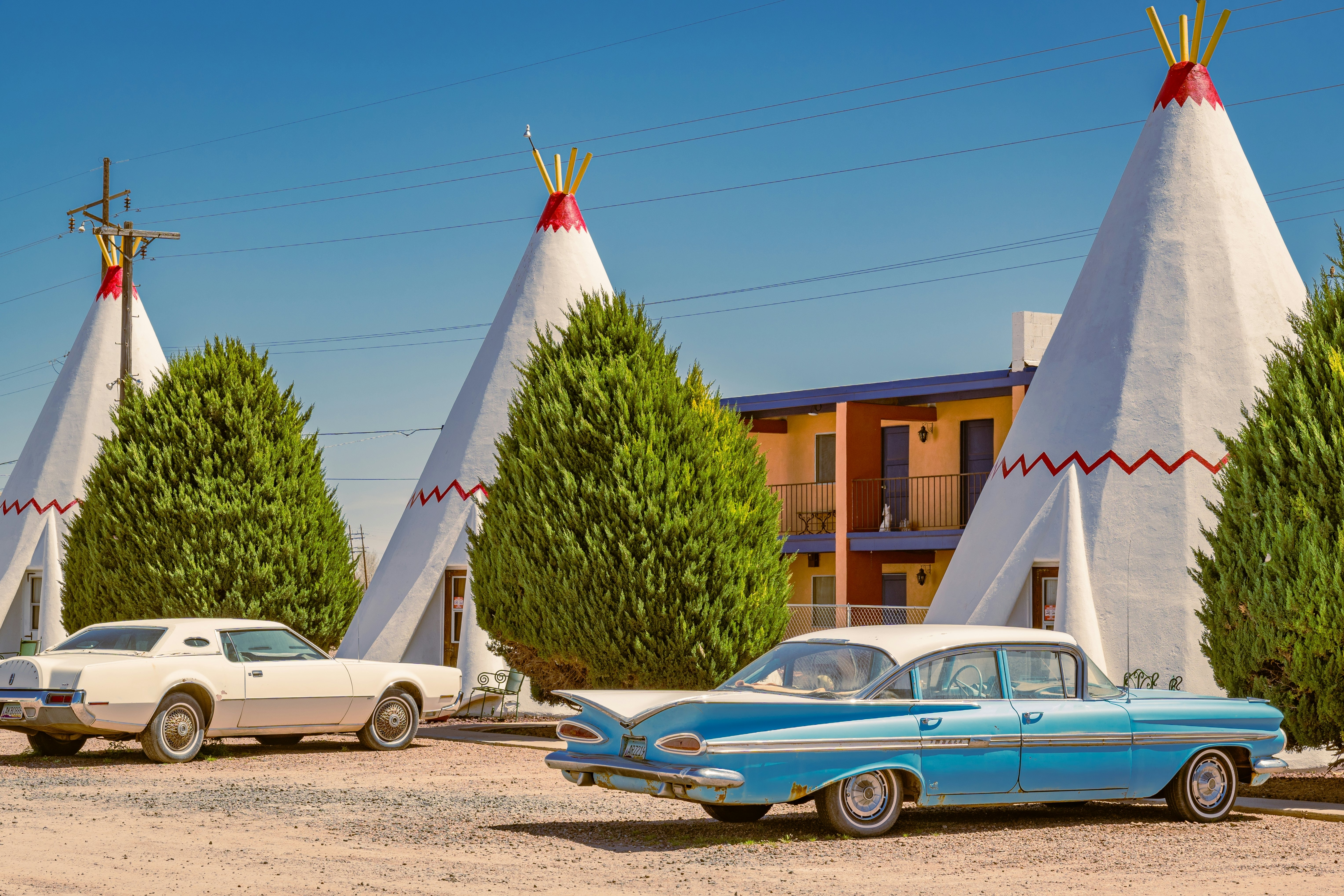
When to arrive in the Southwest
As this is desert country, it pays to consider the climate when planning a road trip. National parks hit capacity during summer vacation from late May to August, and at lower elevations, the mercury can soar to levels that make outdoor activities a grueling (and sometimes risky) ordeal. In the mountains and high-desert regions, however, this is the prime time for outdoor recreation, with comfortable temperatures and clear skies.
Smart travelers come during the wildflower-filled spring from March to May, before the summer crowds arrive, and before the summer heat drives hikers from lowland trails. The autumn months from October to November are also great for outdoor activities and dramatic fall foliage in the high country. From December to March, you can hit the ski slopes in Utah, New Mexico and Arizona, or saddle up at an Arizona dude ranch when temperatures are mild.
How to get around the Southwest
The Southwest is poorly served by public transport – partly a consequence of low population density and the long distances between settlements. While flights buzz between major population centers, backed up by buses and a handful of train services, driving is the best way to explore.
Useful air hubs for exploring (book a rental car ready for your arrival) include Las Vegas, Phoenix, Albuquerque and Salt Lake City. If you don’t mind a bit of extra driving to reach the Southwest, Los Angeles and Denver are also worth considering as alternative entry points.
Research distances and driving times ahead of your trip – before you get on the road, it’s hard to imagine just how vast the Southwest is, and the remoteness of much of it. You’ll want plenty of time to enjoy everything that lies along the way.

Encounter cowboys and canyons between Phoenix and the Grand Canyon
6-day itinerary
Distance: 300 miles (483km)
You can zip to Grand Canyon Village on the South Rim of the Grand Canyon from Phoenix’s international airport in under four hours – but that would mean leaving out cowboys, vortexes and the Lowell Observatory along the way. Instead, swing west to Hwy 89A for Old West towns, Sedona’s red rocks, the leafy beauty of Oak Creek Canyon and high-energy fun in Flagstaff.
Phoenix: 1 day
Spend day one exploring Phoenix, Arizona. If you’ve arrived early, spend an hour or two at the Heard Museum, where you can delve into the history and culture of the Southwest’s tribes. Or stroll through the Desert Botanical Garden to learn the names of the desert plants you’ll be seeing on your trip. Before you depart, enjoy dinner and nightlife along Roosevelt Row downtown.
Prescott: half a day
It’s cowboy time! Head to downtown Prescott, Arizona, for a stroll around tidy Courthouse Plaza, where Montezuma St – aka Whiskey Row – has retained its Old West bona fides for 150 years. Wyatt Earp and Doc Holliday once drank here, and lively taverns still line the street today. Dive deeper into Arizona’s cowboy past with a walk around the nearby Sharlot Hall Museum.
Detour: For some natural history to go with your cowboy history, pull over to explore the unusual rock formations at Granite Dells, about 7 miles (11km) north of Prescott, off State Route 89.
Jerome: half a day
A favorite getaway for Arizonans, the old mining town of Jerome, Arizona, clings to the side of a mountain and marches to its own quirky beat. Highlights include copper mining history, ghosts, local art and pausing for tasty margaritas. Two museums – the Mine Museum and Jerome State Historic Park – showcase the area’s mining history, while boutiques and bars line the zigzagging streets. End with a tequila-based cocktail and a stellar sunset view at the spookily styled Haunted Hamburger.
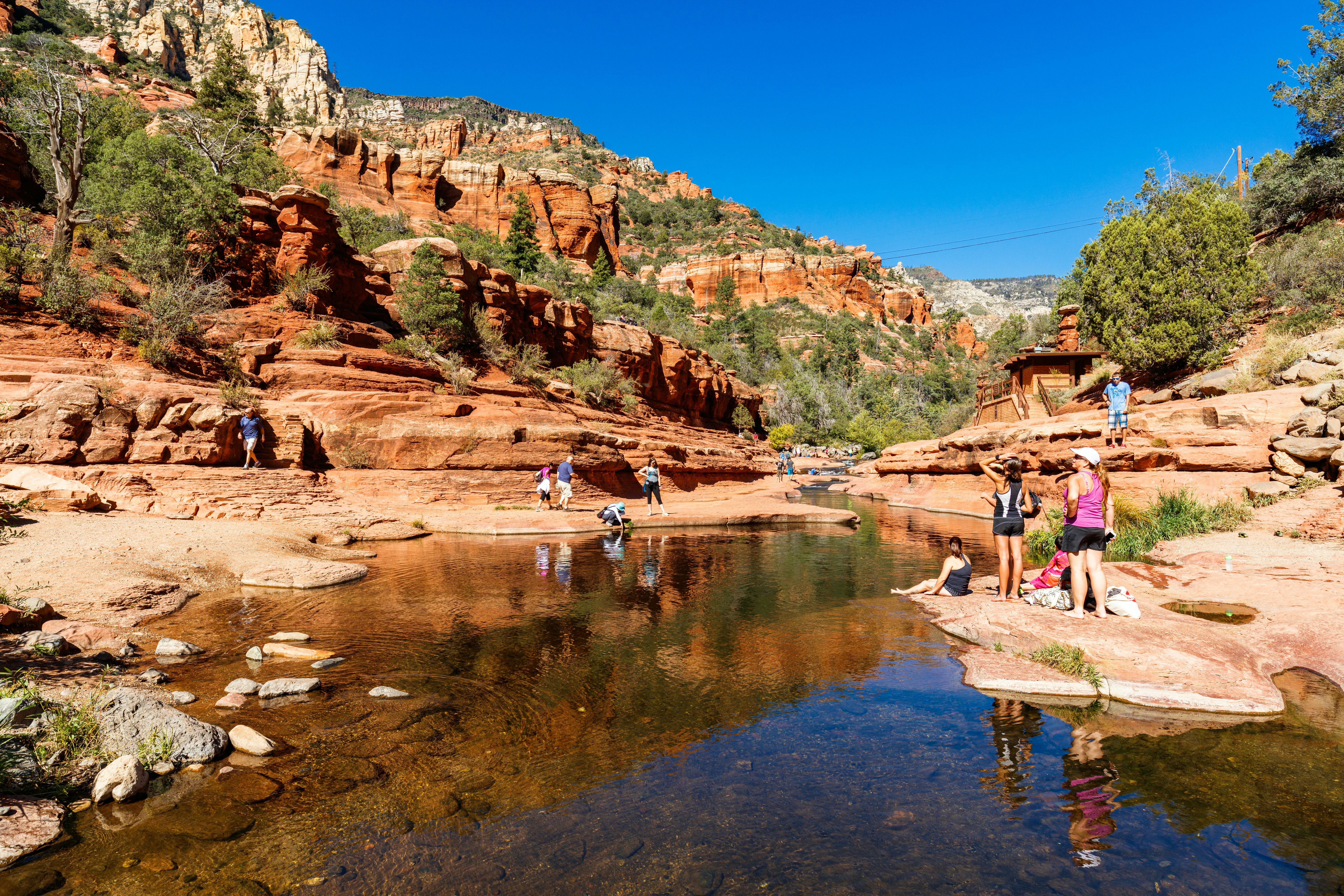
Sedona: 1 day
Cruise into western Sedona on the Scenic Loop, which provides a spectacular red-rock welcome to a region known for its vortexes – spots believed to have heightened natural energy. Grab maps and a Red Rock Pass at the visitor center, then hit the trail to immerse yourself in good vortex vibes. Post-hike, pick a restaurant with a view of the rock formations and admire the colors as night descends.
Detour: Before you head off in the morning, explore Oak Creek Canyon beside Hwy 89A, where walking trails and scenic sections of road lead to stunning spots such as Slide Rock State Park.
Flagstaff: 1 day
In Flagstaff, you can walk past historic icons like the Hotel Monte Vista, Weatherford Hotel and Orpheum Theater. Pop into Babbit’s for last-minute hiking gear, then relax over good food and innovative craft beer in town – options are many. Stargazing is amazing at the Lowell Observatory, an heirloom monument from 1894. Start exploring town from the Flagstaff Visitor Center, which can arrange walking-tour guides.
Grand Canyon South Rim: 2 days
After some dramatic roadside scenery, you’ll hit the edge of the Grand Canyon. A walk along the Rim Trail in Grand Canyon Village has the iconic canyon, historic buildings and Native American art as backdrops. Use your first evening to savor canyon views over dinner at the restaurant at El Tovar. On day two, rise early to walk into the canyon on the Bright Angel Trail, the most popular trail that drops into the canyon, then take the shuttle to a canyon overlook on Hermit Rd for sunset.
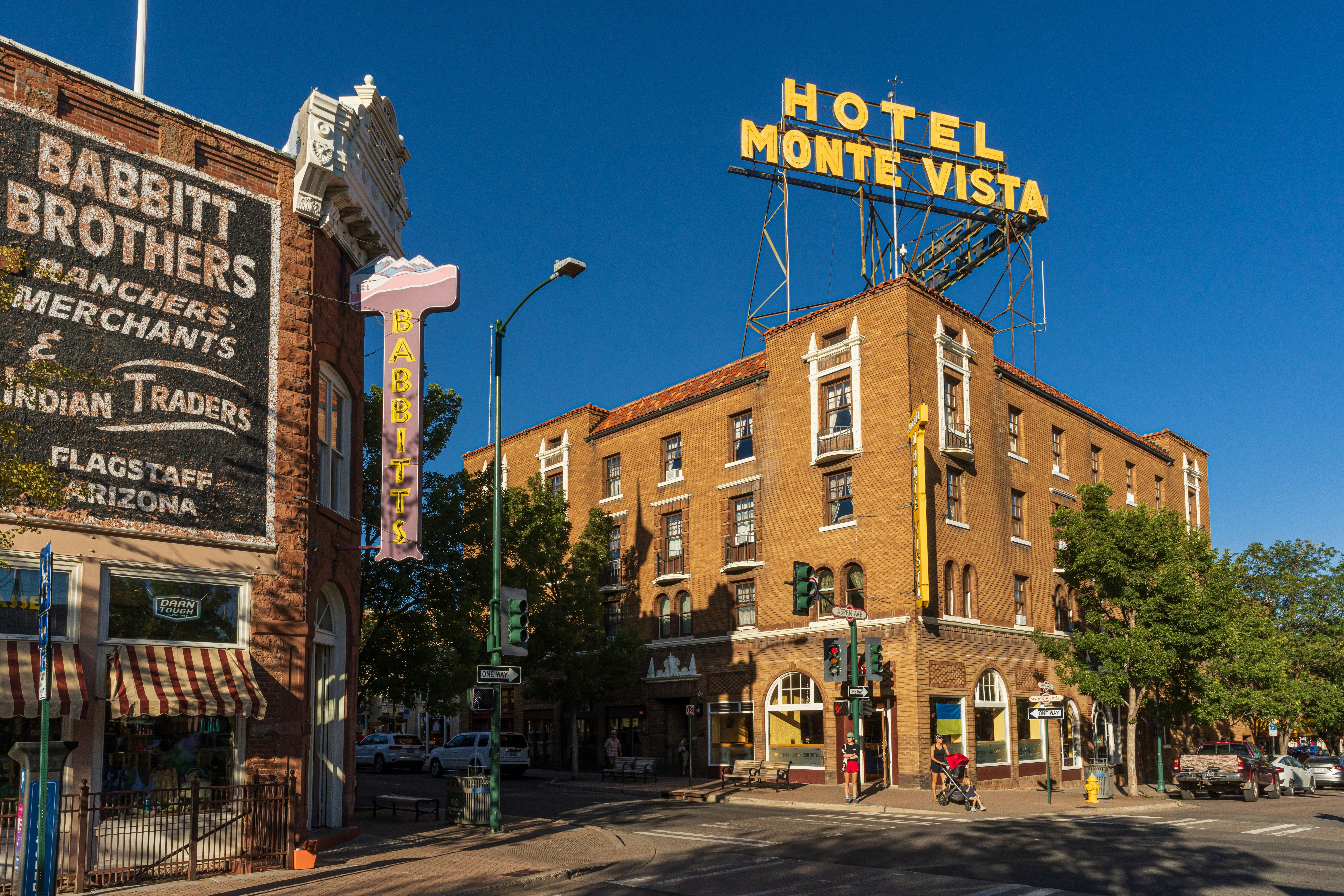
Get your Southwest kicks on Route 66
6-day itinerary
Distance: 725 miles (1167km)
Get ready for some classic bits of Americana, including (but not limited to) a gigantic green head, nostalgic Burma Shave signs, a great big hole in the ground and some iconic concrete wigwams. Yep, you’ll get your kicks – as well as your kitsch – on this storied stretch of the Mother Road through Arizona and New Mexico, bookended by dazzling displays of neon.
Kingman: half a day
Learn about the Mother Road at the Route 66 Museum in Kingman, Arizona, then pull up beneath the Route 66 arch in the parking lot for a mandatory photo op. Burgers, shakes and 1950s knickknackery are highlights at Mr D’z Route 66 Diner. Pull over about 22 miles (35.5km) north of Kingman to snap a photo of the tiki-shaped monument Giganticus Headicus (it brings to mind Squidward’s house in SpongeBob SquarePants), then watch for red-and-white Burma Shave signs as you continue the drive.
Seligman: half a day
Tiny roadside Seligman takes its Route 66 heritage seriously – or with a squirt of fake mustard, thanks to the Delgadillo brothers, for decades the route’s biggest boosters. Sadly, whil Juan passed away in 2004 and his brother Angel retired from his gift store and barbershop in 2022, you can still visit a small museum on the site. The good news is that burgers, ice cream and pranks are still served at family-run Delgadillo’s Sno-Cap.
Flagstaff: 2 days
Route 66 barrels right through downtown Flagstaff, parallel to the city’s railroad tracks. Stop by the visitor center to arrange a Route 66 walking-tour guide. Home to great restaurants, breweries and a busy observatory, this college town is an inviting place to kick back. Don’t miss live music at the iconic Museum Club on one night of your stay.
Detour: Set aside half a day for an impressive pit stop about 45 miles (72.5km) east of Flagstaff at the imposing Meteor Crater, created by a mighty meteorite about 50,000 years ago.
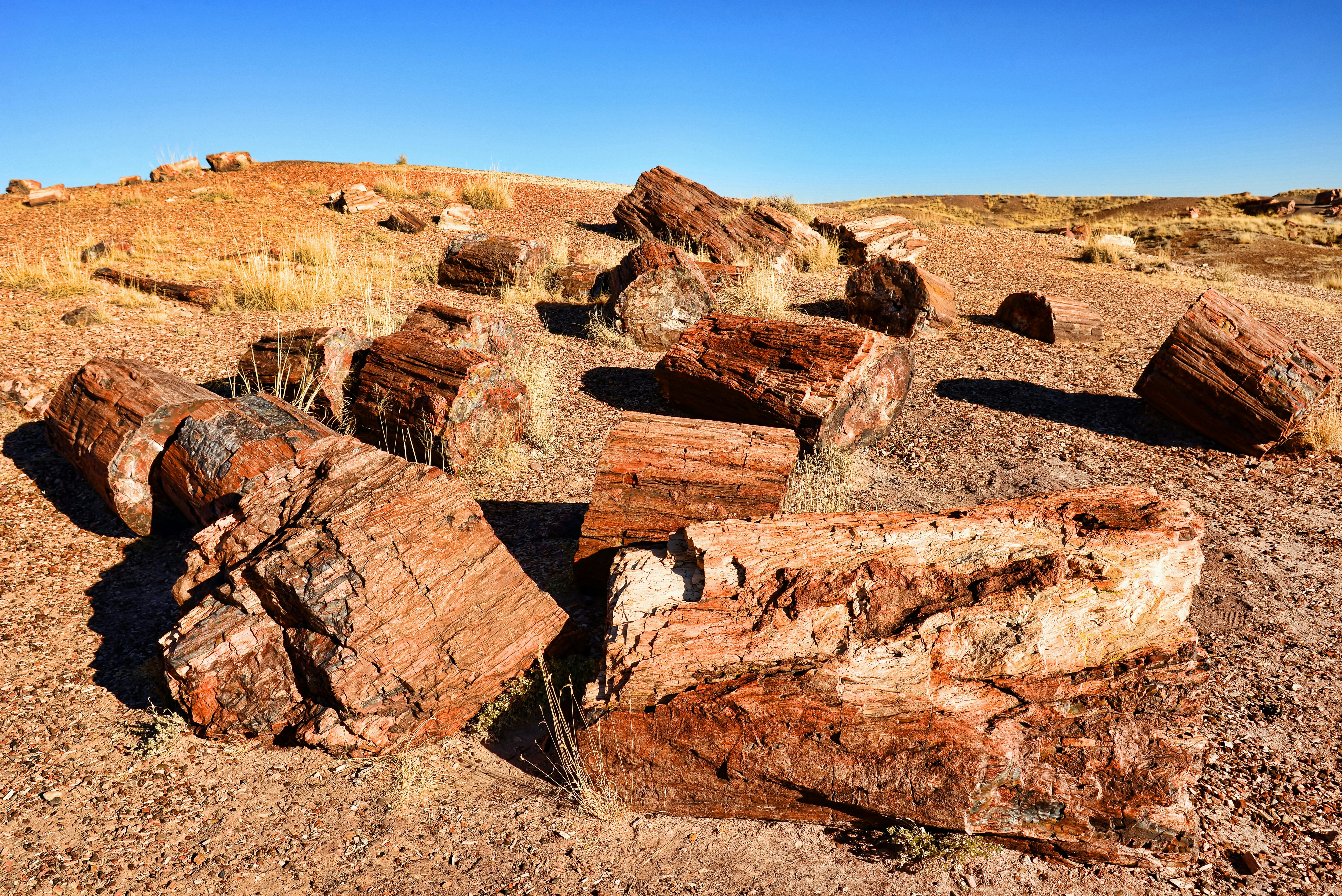
Petrified Forest National Park: half a day
America has plenty of ancient woodlands. But the forest at this dusty national park – made up of fragmented, 225-million-year-old fossilized logs that predate the dinosaurs, scattered over arid, high desert grasslands – is in a class of its own. The park also contains an abandoned segment of Route 66; pull over to check out the rusted antique car and display area. A 28-mile (45km) scenic road ribbons along the length of the park, passing badlands, rock art and trails through clusters of petrified trees.
Detour: For a bonus slice of Americana, stay overnight at the legendary Wigwam Motel at Holbrook, about 26 miles (42km) west of Petrified Forest National Park.
Albuquerque: 2 days
Okay, you’re done with Arizona; now it’s on to New Mexico. Central Ave follows Route 66 right through Albuquerque, passing through Nob Hill, the adobe buildings of the University of New Mexico, downtown and Old Town. There’s plenty to see and do here; west of downtown, look for the tile-and-wood artistry of the KiMo Theatre, a 1927 icon blending Native American and art deco design, and take a walking tour of Albuquerque’s art gallery–studded, adobe-heavy Old Town.
Tucumcari: half a day
A ranching and farming town, Tucumcari, New Mexico, is home to one of the best-preserved sections of Route 66, as well as to an interesting (and eclectic) town museum. It’s a great place to drive through at night, when dozens of neon signs – relics of the Mother Road’s heyday – cast a crazy glow. Marked by its bright neon sign, the long-running Blue Swallow Motel is a classic spot to spend the night to tie up your trip.
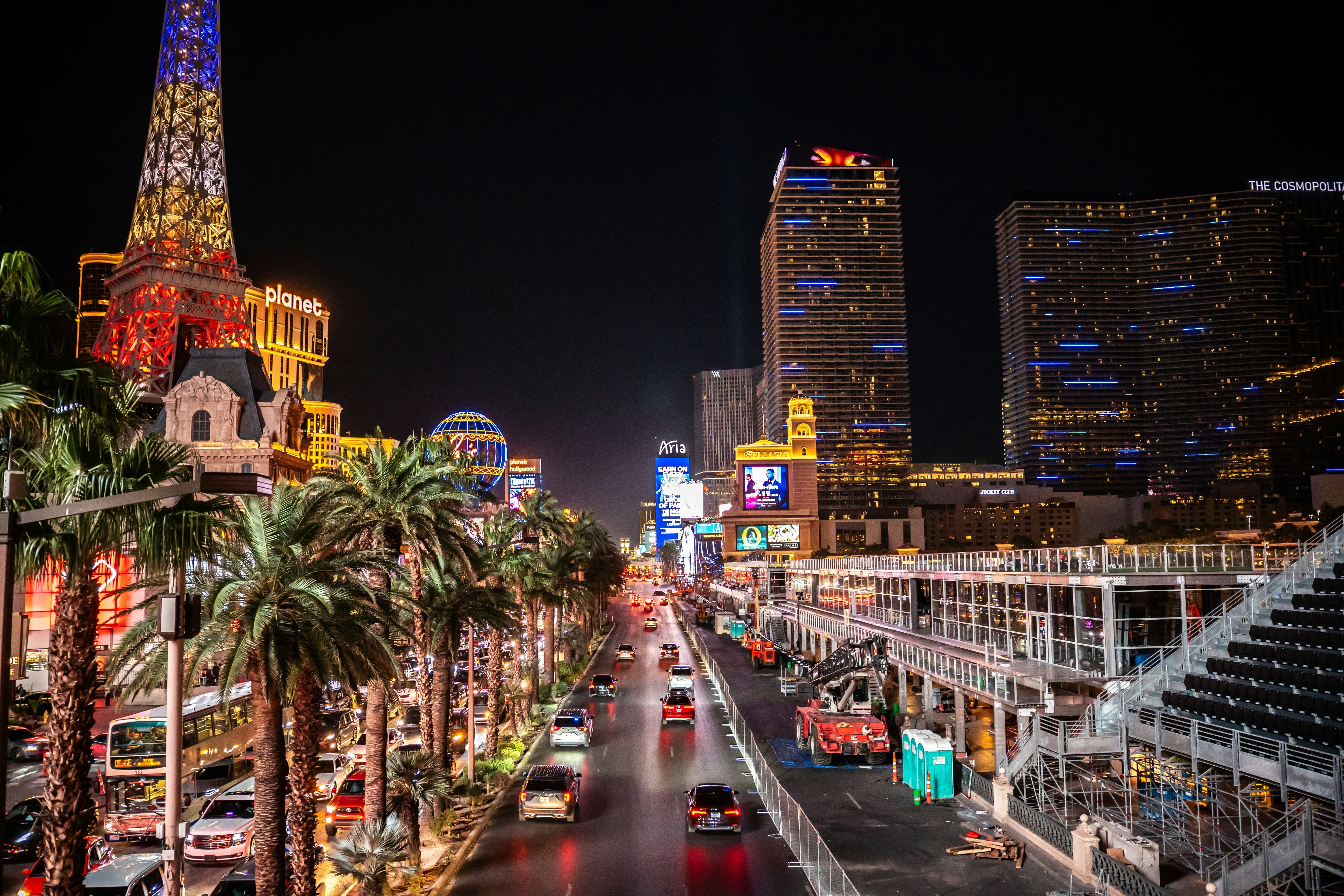
Take in the red-rock scenery of Las Vegas and Southern Utah
7-day itinerary
Distance: 825 miles (1328km)
Want fiery red rocks, mesmerizing geologic formations and a little Vegas bling on your weeklong vacation? Then buckle up for this sun-splashed cruise through Nevada and the southern stretches of Utah. This route serves up a classic slice of the Southwest, taking in rugged desert scenery and a city carved seemingly from nowhere in the midst of it all.
Las Vegas: 1 day
Neon lights light up the Strip and its evening debauchery, while the historic signs at the Neon Museum trace the decades-long story of Nevada’s Sin City. You’ll want to swing into a casino or two to soak in the Las Vegas razzle-dazzle, but it’s more rewarding (emotionally, at least) to take in the local red-rock scenery.
Make a beeline for Red Rock Canyon National Conservation Area just west of the Vegas city limits – a steep and rugged red rock escarpment rising 3000ft (914m) and buzzing with rock climbers, hikers and wildlife watchers.
Valley of Fire State Park: half a day
A masterpiece of desert scenery filled with psychedelically shaped sandstone rocks, Valley of Fire State Park to the north of Lake Mead is truly spectacular. Scenic roads pass various crimson geologic curiosities carved by the forces of erosion from the local Aztec sandstone. The valley is at its most fiery at dawn and dusk, so time your drive accordingly.
Zion National Park: 2 days
The soaring red-and-white cliffs of Zion National Park are one of Utah’s most dramatic natural features, but the canyon also hides more delicate wonders – “weeping” rocks, tiny grottoes and hanging gardens. These lush pockets distinguish Zion from the more-arid parks to the east. Board a park shuttle to traverse the 8-mile (13km) Scenic Rd, which pierces the heart of the park, and take your time exploring on the park trails.
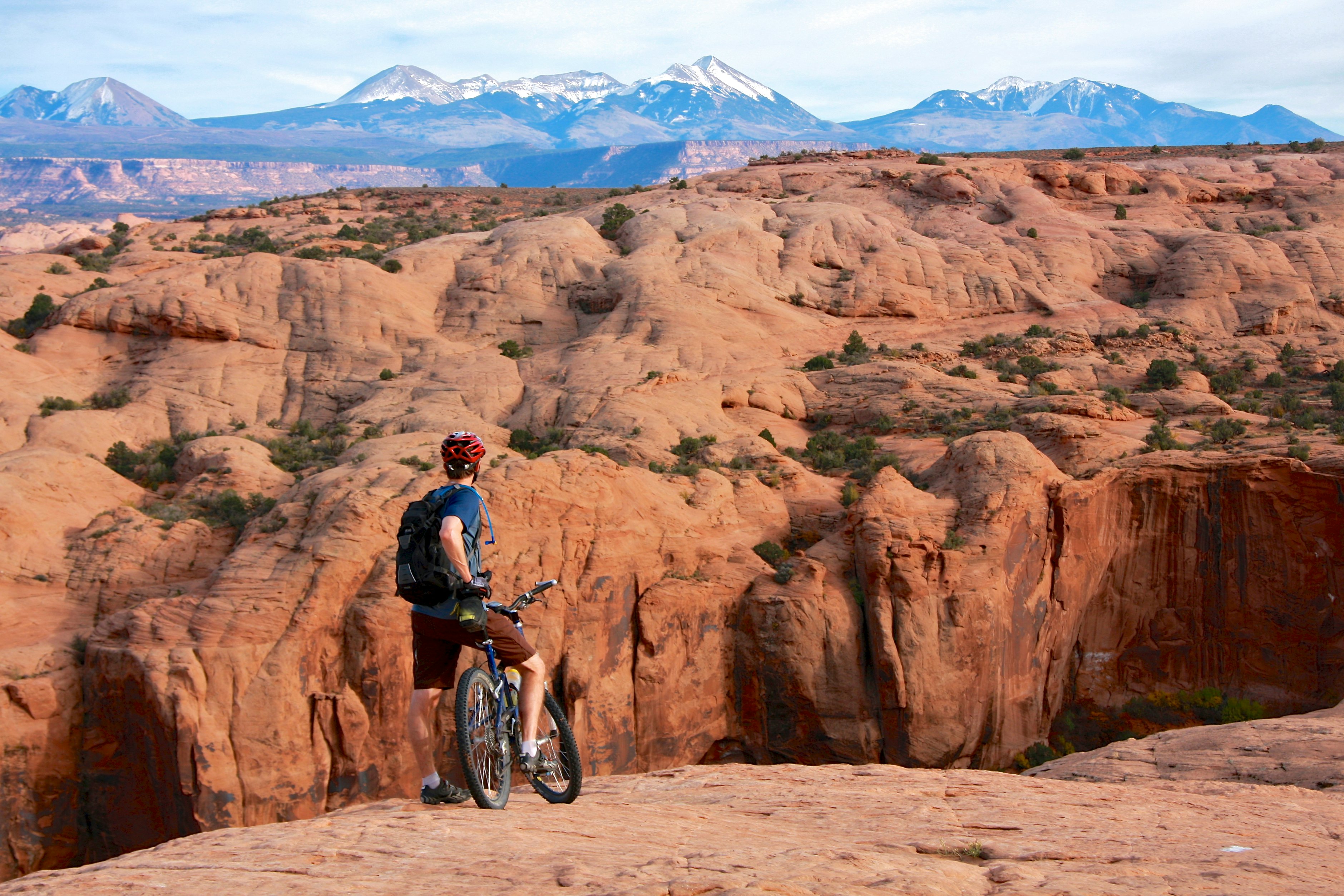
Bryce Canyon National Park: 1 day
Trails meander past pastel-colored spires and hoodoos at Bryce Canyon, one of the Southwest’s great wonders. The canyon is an amphitheater of sandcastle-like formations, and the Queen’s Garden–Navajo Loop Combination Trail drops into this bowl of spires and emerges via stunning switchbacks. Get an early start to make the most of this active day.
Capitol Reef National Park: half a day
The Southwest’s scenery is best appreciated in silence. You can shake the crowds – well, most of them – at Capitol Reef, the least visited of the five national parks that call Utah home. This scenic place is anchored by the Waterpocket Fold, a 100-mile (160km) monocline running north–south through the park. For a half-day diversion, stop by historic sites in Fruita and tackle the short Hickman Bridge Trail.
Moab: 2 days
End with two days in Utah’s natural adventure playground. Tucked between two national parks and home to restaurants, motels and outfitters serving up all sorts of outdoor adventures from hikes and mountain biking to rafting, Moab is a fun launchpad for fresh-air thrills in southeastern Utah.
More than 2000 sandstone arches await in nearby Arches National Park, while Canyonlands National Park features one of the Southwest’s most iconic red rock overlooks – Mesa Arch, with its famed view of Washer Woman Arch and Buck Canyon.
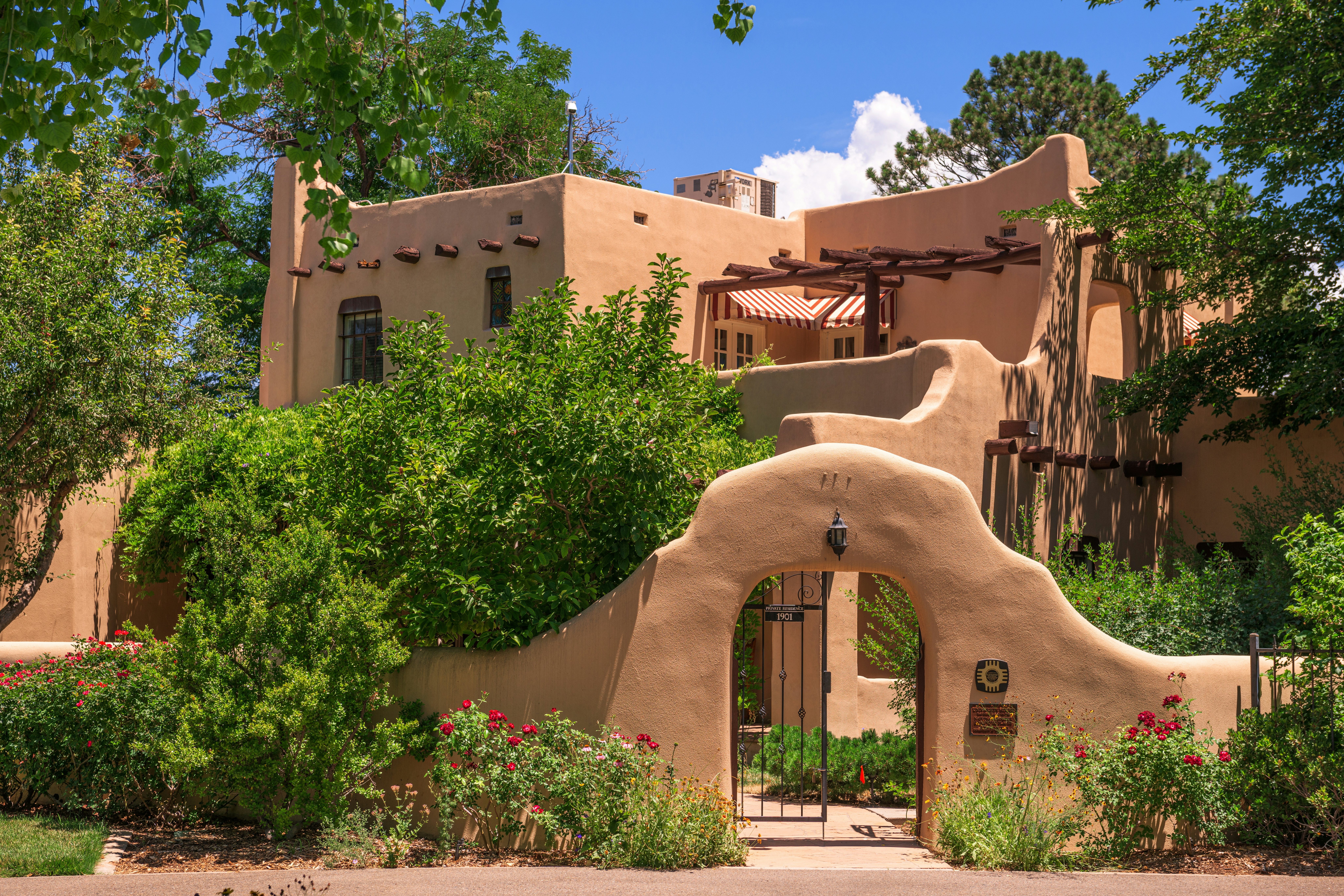
A Native American tour of the Southwest
6-day itinerary
Distance: 435 miles (700km)
The stories, traditions and artistic ingenuity of the Indigenous peoples of the Southwest vary from place to place, though a deep connection to the land and its life ties together Native American sites across the region. Discover more on this history-rich and scenery-focused drive through Arizona, New Mexico and Utah’s southern fringes, swinging past pueblos, ancient cliff dwellings and a classic mesa-top village.
Albuquerque: 2 days
The largest city in the state, Albuquerque provides a fascinating and detailed introduction to Native American culture at the Indian Pueblo Cultural Center, which shines a spotlight on New Mexico’s 19 Pueblos. The on-site cafe serves Pueblo-inspired cuisine, so you can explore with your taste buds, too. Take two days, so you can also soak up the work of local artists, enjoy more Southwest dining and nightlife, and appreciate Albuquerque’s rich history.
Detour: For a deep dive into Indigenous culture, you’ll find more than 2000 petroglyphs at Petroglyph National Monument, 7.5 miles (km) north of Old Town.
Acoma Pueblo: half a day
Walking around the old adobe homes at Acoma Pueblo (Sky City), one of the oldest villages in the United States, is immensely rewarding. The pueblo occupies a stark 330ft-high (101m) mesa-top that was first settled in the 13th century. Not only is the location unique, but a tour reveals a rich cultural heritage and a fascinating story, one that’s not often told in schools. There’s a museum and cultural center on-site, too.
Window Rock: half a day
To break the journey northwest, pull in for mutton stew and other Navajo dishes at Diné Restaurant in Window Rock – a hearty portion of Indigenous cooking culture. At nearby Navajo Veterans Memorial Park, an enormous circular rock overlooks it all from its perch atop a ruddy sandstone cliff. It’s a view you’ll remember long after it fades into the far distance.
Detour: For a journey breaker between Window Rock and Canyon de Chelly, pull over to see a Navajo weaver in action and browse the long-running general store (founded in 1878) at Hubbell Trading Post near Ganado.
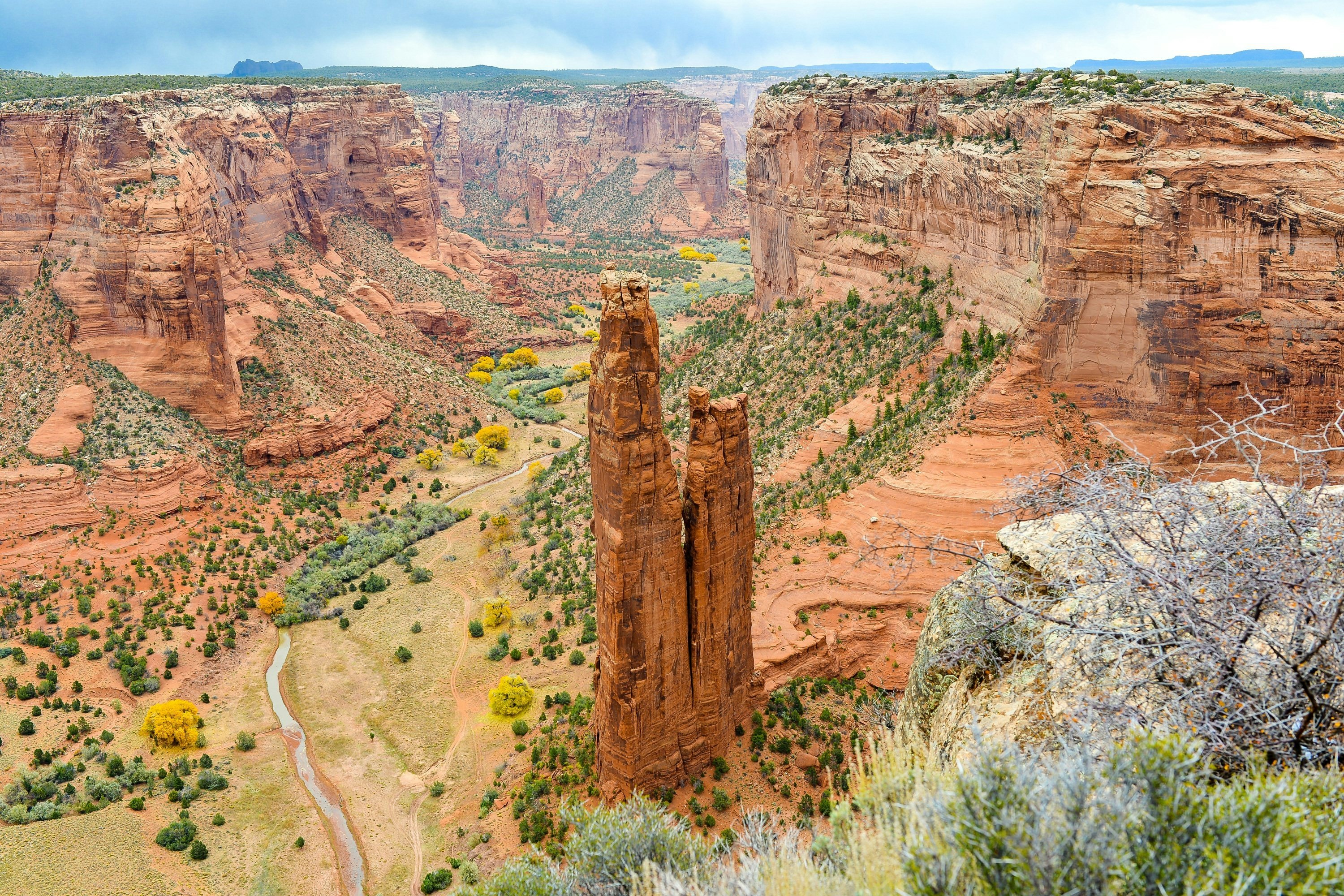
Canyon de Chelly: 1 day
Inhabited for 5000 years, the sacred and beautiful Canyon de Chelly National Monument shelters prehistoric rock art and 1000-year-old Ancestral Puebloan dwellings alongside contemporary Navajo farmsteads – a reminder that the soul of the Southwest lives on through its Indigenous people. Indigenous families still farm the narrow strip of land at the canyon’s base. Drive the North and South Rim Trails for views from the canyon’s edge or take a guided tour into the canyon depths.
Monument Valley: 1 day
The views of Monument Valley from Hwy 163 are something, but the vistas on the 17-mile (27km) scenic loop drive in Monument Valley Navajo Tribal Park are something else. You’ll pass a natural gallery of spectacular and dramatic rock formations, including the Mittens, Elephant Butte and the Three Sisters. For a guided tour into areas where private vehicles cannot go, stop by a tour kiosk in the parking lot. With rooms facing the formations, The View Hotel is a beautiful place to wake up and gasp at the vistas.
Bears Ears National Monument: 1 day
Finish up at the first national monument created at the request of Native tribes. Bears Ears holds a trove of archaeological and scenic wonders. Home to ancient Native American granaries, towers and kivas (subterranean spiritual sites), Mule Canyon in the Cedar Mesa area offers a fascinating introduction to the area; don’t miss hiking to the five granaries at House on Fire. Kane Gulch Visitor Center has information to help plan your explorations.
This article was adapted from Lonely Planet’s Southwest USA guidebook, published in August 2025.









